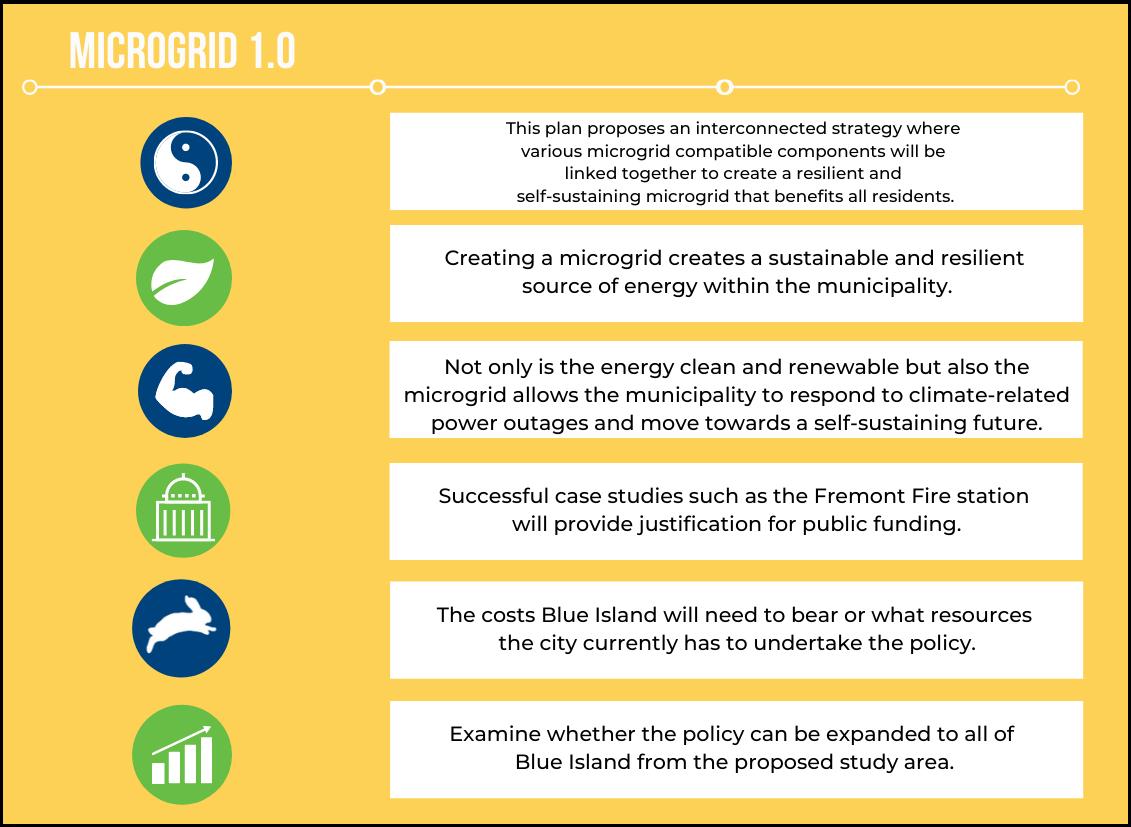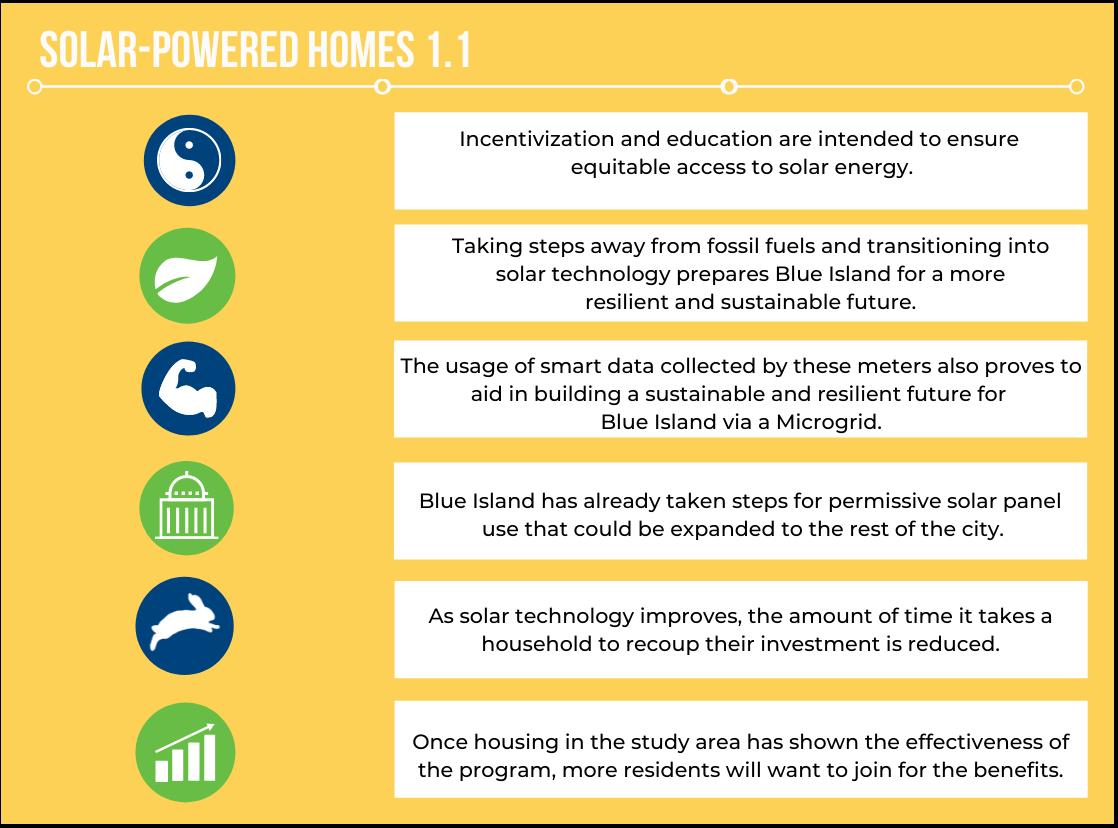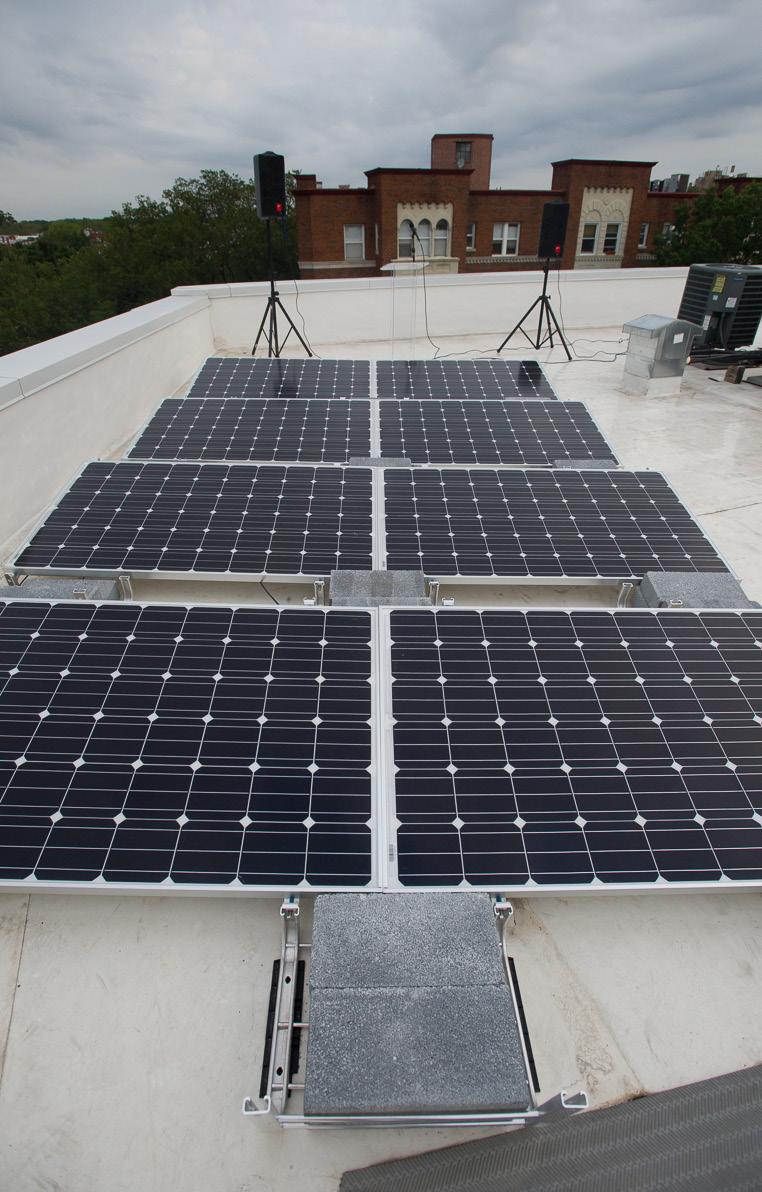
2 minute read
1.1 Solar-Powered Homes
Additionally, the community microgrid will also leverage smart housing meters and high-quality energy storage to maximize energy efficiency and resiliency.
According to research via the National Renewable Energy Laboratory, the mean cost of a community microgrid is $2.1 million per megawatts of Distributed Energy Resources such as solar or wind power.30 With the increased interest in renewable energy technology, there are several funding opportunities that Blue Island can take advantage of, including the U.S. Department of Energy and Illinois Future Energy Jobs Act (FEJA) funding.
Advertisement
In fact, ComEd has been able to secure U.S. Department of Energy Funding for similar projects.
Not only is the energy clean and renewable but also the microgrid allows the municipality to respond to climate related power outages and move towards a self-sustaining future.
SOLAR-POWERED HOMES
Stakeholders: ComEd, Solar Energy Businesses, Blue Island Planning & Marketing Departments, residents
Timeline: 1-5 Years Home solar is a good first step towards a community microgrid for Blue Island because the expertise to install solar panels on homes is already prevalent throughout the region. There are several businesses that focus on these types of installations. Additionally, ComEd has the capacity to connect residential solar panels to the larger energy grid. Thus, residents will see their energy bill decrease.
Although the upfront costs are high, generally around $15,000 to $25,000, there are several state initiatives to mitigate these costs.31 Illinois Solar for All and Illinois Shines provide assistance, and there is also a tax deduction for residents who transition to solar energy.
There are two policy interventions that Blue Island can take in the next five years to help increase the number of residential solar panels in Blue Island:
1
Launch a community outreach program.
2
Extend solar panel allowances outlined for the Uptown Transit Oriented Development (UTOD) district to the rest of Blue Island
(see Section 7.2 for details).
The Blue Island Planning Department and the Marketing Department can collaborate to develop a homeowner’s guide to solar panels. This guide will include:
▶ Summary of benefits of solar panels ▶ State and federal incentives ▶ Explanation of the ComEd pay-back program ▶ Steps on how to get started with a solar panel installation As stated previously, about 66% of roofs in Blue Island are viable for solar panel Installation.32 To determine which homeowners should be targeted by this campaign, the Blue Island Planning Department can consult with ComEd and Google’s Project Sunroof to identify Blue Island residential structures that are best suited for solar panel installation.







